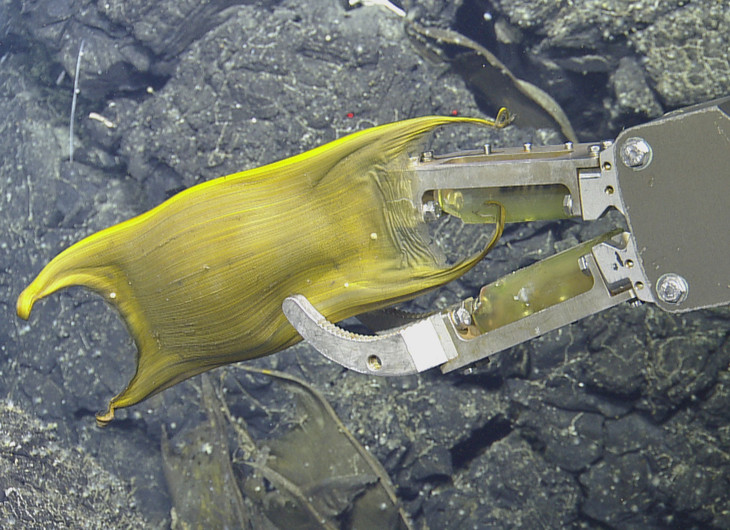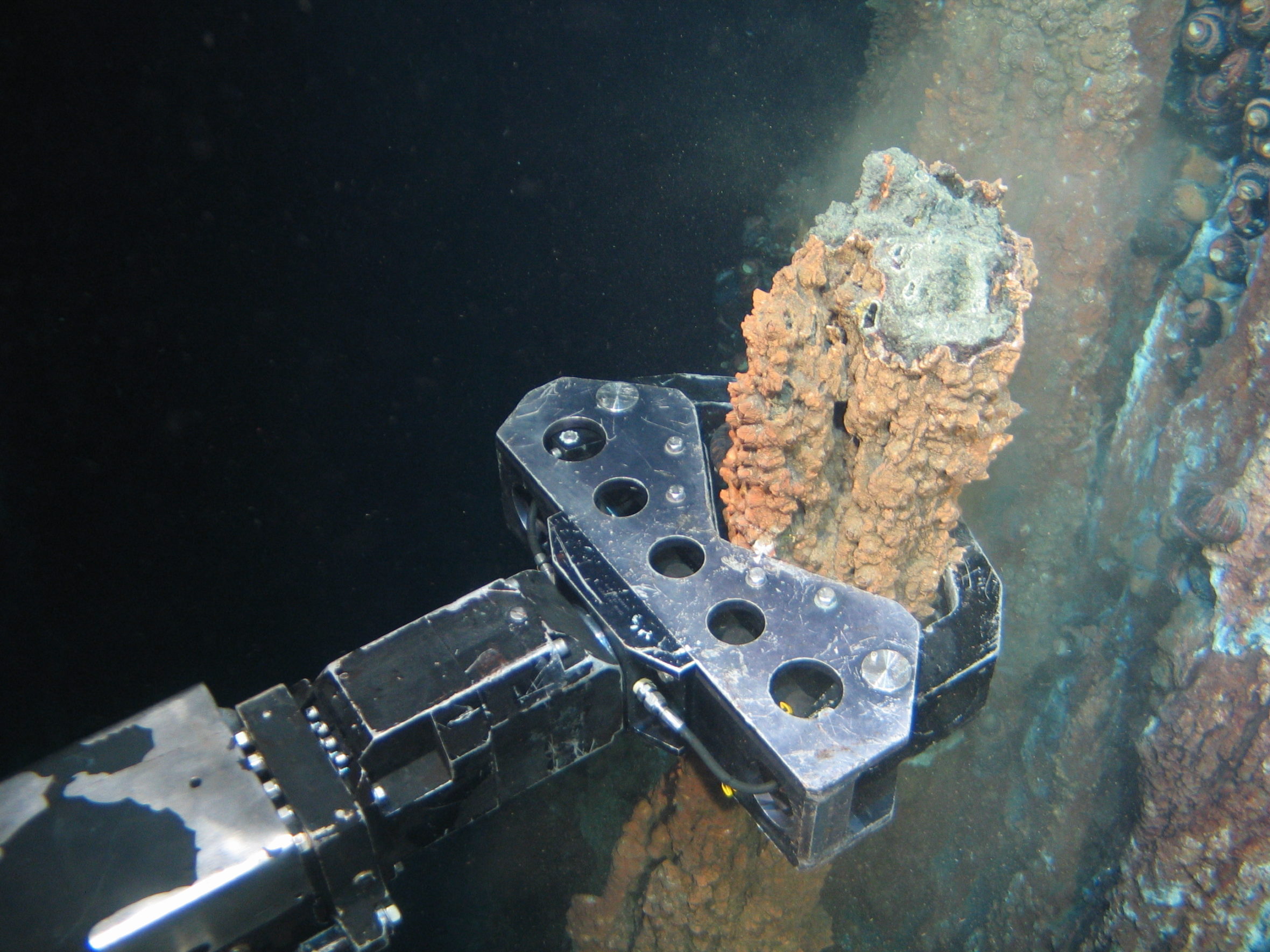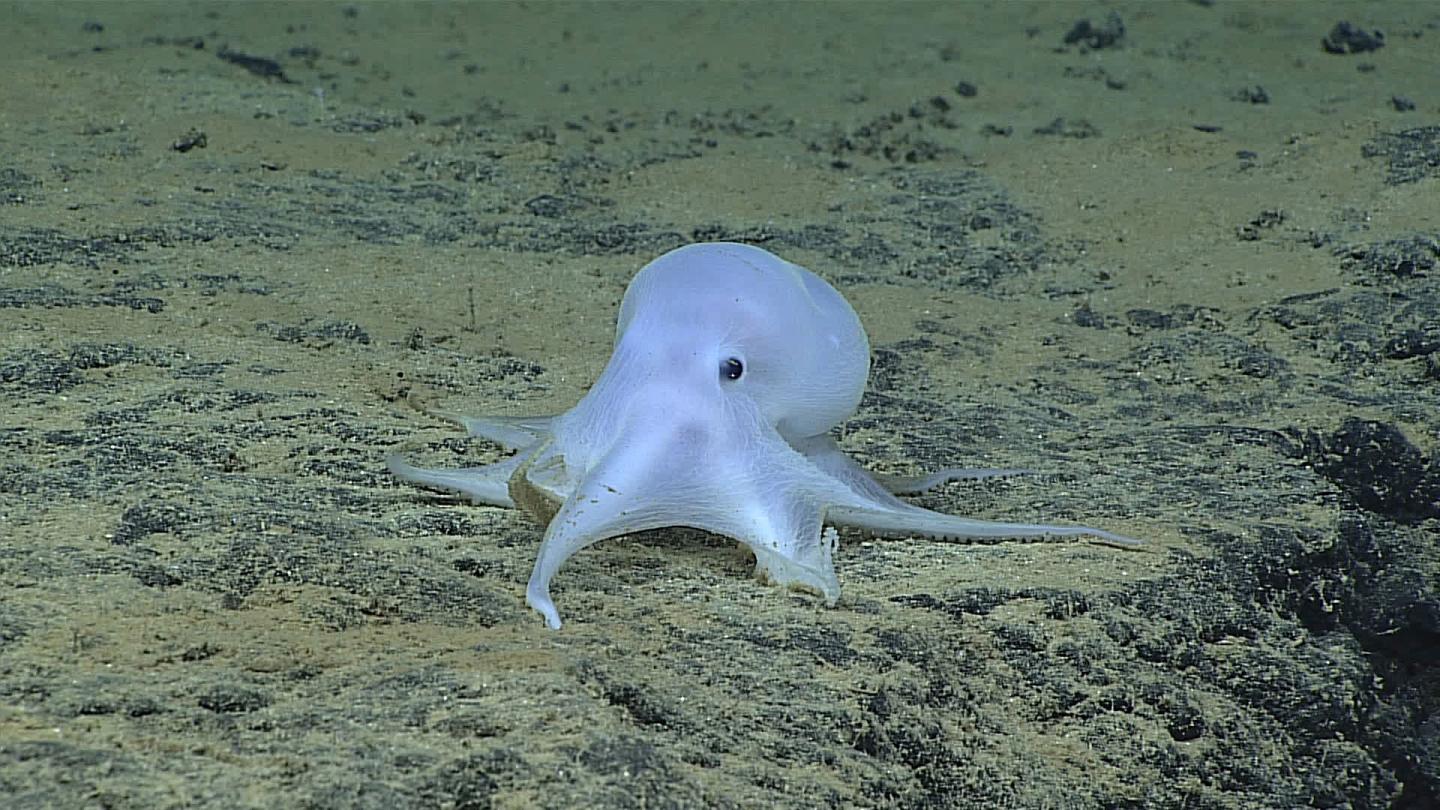One of the most tantalizing emerging trends from the last half year are new studies showing connections between ecosystems found on and surrounding hydrothermal vents and wider deep-sea communities. Much effort has been spent understanding how hydrothermal vent ecosystems are connected to each other but relatively few studies investigate how those communities are connected to rest of the deep sea. Though vent-dependent species often have highly restrictive habitat requirements, the influence of hydrothermal processes can be observed far beyond the perimeter of an active hydrothermal vent field.
Two recent studies shed new light on how hydrothermal vents impact deep-sea animals that were not previously known to interact with these ecosystems. In both cases, seafloor massive sulfides were used as nursery grounds for non-vent animals. The Pacific white skate was observed using hydrothermal vents on the Galapagos Rift as nursery grounds and natural incubators. These skates have one of the longest incubation times in the animal kingdom, taking over four years for an egg to hatch. But this process is accelerated in warmer waters, leading researchers to hypothesize that the skate are using the heat of the vents to reduce incubation time. In another instance, a cluster of octopuses use the basalt outcrops near hydrothermal vents for egg brooding, though proximity to the vents was associated both with habitat availability and decreased reproductive success.
The edges of hydrothermal vent fields are transitional areas where animals that live scattered across the deep seafloor interact with vent fauna. Opportunistic species, such as squat lobsters, that are common in the deep sea, are often observed in large aggregations at or near both active and inactive vent sites, but observations of such stark connections between generic deep-sea fauna and hydrothermal vents are rare. Though there are several examples of non-vent species taking advantage of abundant food at hydrothermal vent ecosystems, and it is estimated that approximately 3% of organic carbon in the deep sea derives from primary production at seafloor massive sulfides, there are no studies that look comprehensively at how hydrothermal vent ecosystems are connected to the broader oceans.
Evaluating the full environmental impacts of mining at hydrothermal vents requires looking not just at species endemic to the vent ecosystem but at how species in the generic deep sea interact with those systems.


